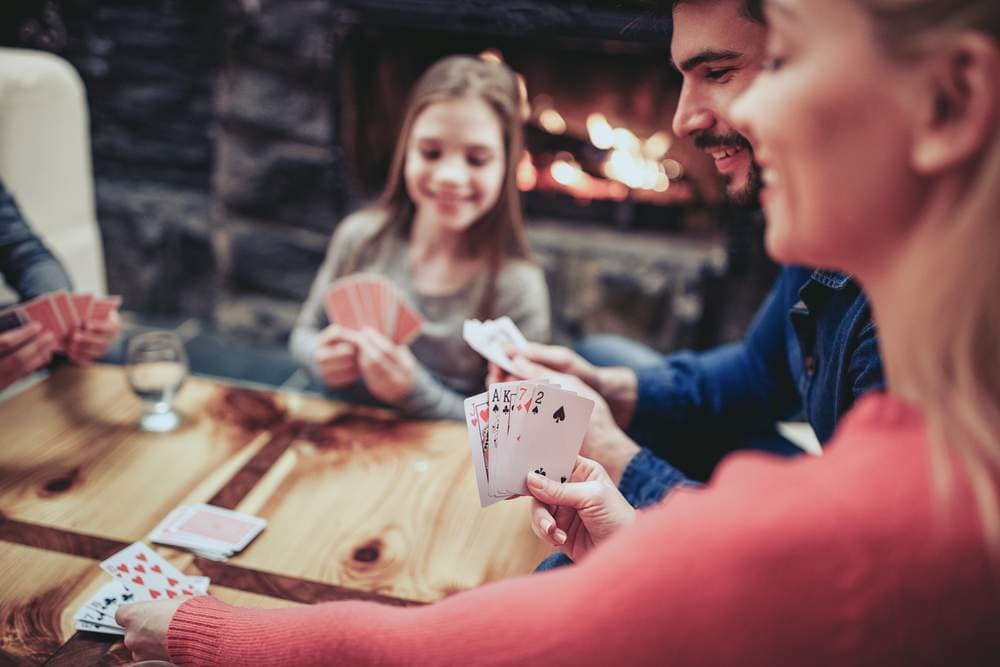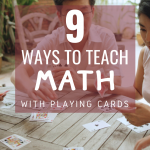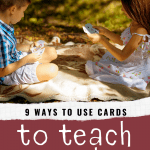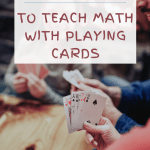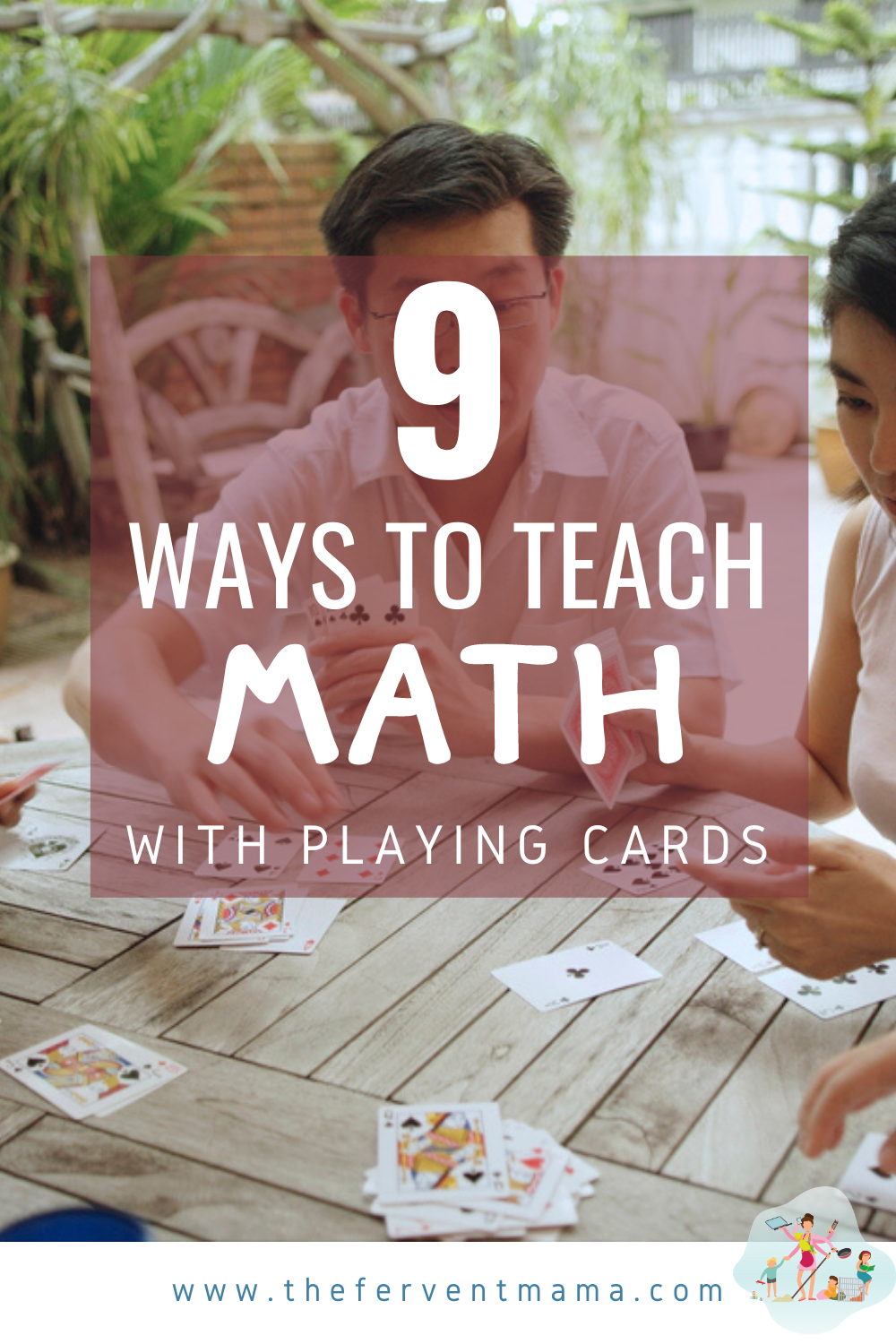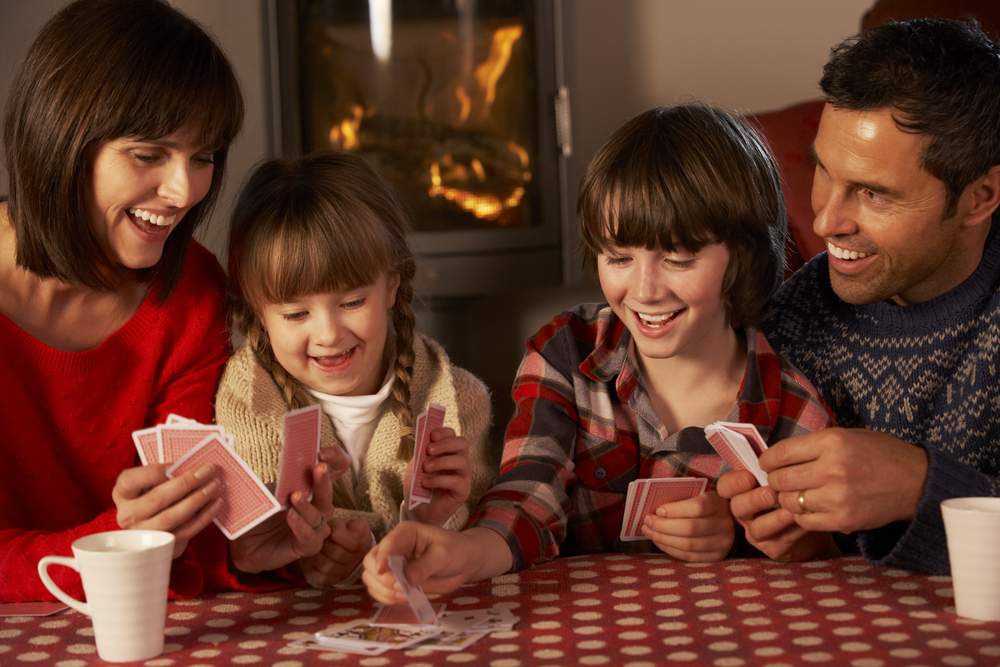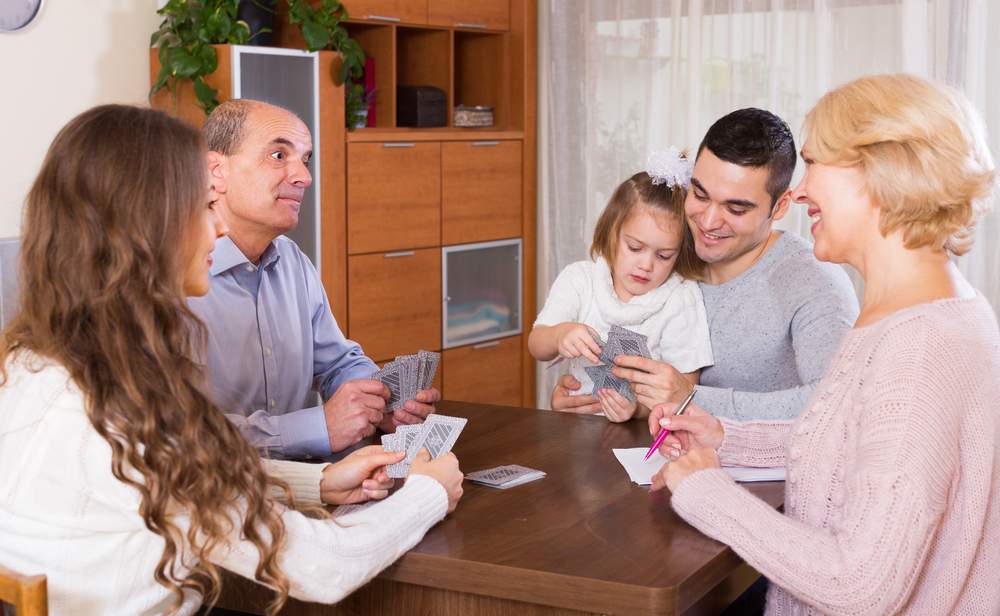9 Game-Based Ways to Teach Math With Playing Cards
The Fervent Mama uses Affiliate Links. See our disclosure policy here.
Game-based learning is one of the best ways to have children engage and be excited about schooling. It helps children have a hands-on approach to learning while also providing them valuable character-building competition!
We love adding games to our homeschool, especially when we are implementing new strategies or struggling with new concepts.
A cheap way to incorporate games into your schooling is with playing cards! Cards not only have numbers but also sets of objects to represent those numbers, making it as useful as counting bars for teaching young mathematicians.
Most people can dig up a deck of playing cards right at home, making this a convenient and fun way to teach math manipulatives!
Game-Based Ways to Teach Math With Playing Cards
Counting
Because you have 4 of each number/letter, A-10, simple counting is easily taught by using the number cards and the Ace for a one. For younger learners, this type of repetition is a great way to enforce number recognition and sequencing.
You could even encourage your learner to put multiple cards together to create larger numbers!
Sorting and Patterns
Each deck of cards comes with 4 sets of numbers/letters in two different colors. Have your child sort the cards by color and shapes (clubs, hearts, spades, diamonds).
Mix it up by inspiring your child to create and continue patterns with respect to colors, shapes, and numbers.
Two-Card WAR
Divide the deck between the players
The object of the game is to have more cards than your opponent when the game ends.
Depending on which version of the game you’re playing (addition, subtraction, multiplication) you will perform a math manipulative to get your SUM. At their turn, each player must put down two cards face down.
When each player is ready, the cards are turned over. The winner of the round is the player with the highest SUM of the round. The winner receives all of the played cards of that round.
The game is over when there are no more cards to play. The overall winner is the player with the most cards.
Addition War
The two cards that add up to the greater number is the winner of that round. (EX. 4+5= 9 < 5+5=10)
Subtraction War
The winning hand is the one with the two cards that have the greatest distance. (EX. 7-1=5 > 4-3=1)
Multiplication War
The two cards that produce the greatest SUM when multiplied is the winning hand and claims all played cards.
Up the ante by playing with more than two players. Competition is fun and they’ll never know that they’re actually learning math with playing cards!
Anything Goes War
LotFancy Playing Cards, Poker


Each player lays down two to four cards. The players have the choice of adding, subtracting, multiplying, or a combination to come up with the highest amount.
The player with the largest SUM wins the hand and keeps all the cards played.
The player with the most cards at the end of the game wins.
Memory and Matching
Lay the cards face down and have the child pick up one and then pick up another. If the card matches or adds to a particular number previously decided on, then he removes the cards from the play area.
Play continues until all the cards have been matched.
5 Digit Winnings
Remove kings and jacks from the deck. Ace is one and Queen is zero.
Players take turns drawing one card at a time, trying to create the largest 5 digit number possible.
As each card is drawn it is placed (and cannot be moved) into the ones, tens, hundreds, thousands, or ten-thousands place.
When the sixth card is drawn, the player can choose one of the cards on the table to discard and replace it with the sixth card.
The largest 5 digit number wins. You can make this game easier or harder by varying the number of digits.
Guess the Addends
This game-concept is more fun with at least three players but can be played with two. You’ll want to begin by removing the face cards and jokers, but keep the Ace to represent one.
It’s a lot like the game “Headbands”, except learning math with playing cards.
Cards are dealt evenly among the players. Each player takes two cards from the cards they were dealt and places them on their foreheads with numbers facing out, or toward the other players.
The youngest player starts by giving the player to their left the SUM of the cards on the players’ head. That player then has one chance to guess the numbers on their head based upon the SUM hint.
If the player answers correctly, they remove their cards and place them in their own winning pile, ending their turn. If they do not, the game continues to the person to their left.
The game continues until a player runs out of cards. The first player to run out of cards wins the whole game. You can use this method for multiplying as well.

